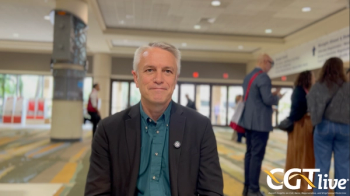
Rocket Provides Positive Outlook for 5 Gene Therapies in Rare Disorders
Rocket Pharmaceuticals has summarized multiple major milestones for its 5 gene therapies from 2020 and provided a forecast and outlook for what is expected to be a banner year for the organization.
Rocket Pharmaceuticals summarized multiple major milestones from 2020 and provided a look forward to what is expected to be a banner year for the organization, in the
“2021 is poised to be another exciting year for Rocket,” Gaurav Shah, MD, chief executive officer of
Findings in FA, LAD-I, and PKD were presented at the beginning of December 2020 during the ASH Annual Meeting.1-3 The company anticipates further updates to these data in the second half of 2021, including phase 2 data for RP-L201 in LAD-I and updated findings from the Process B study of RP-L102 for FA.
In the clinical findings announced at ASH for patients with FA,1 there were 9 patients treated with RP-L102 across both phase 1 and phase 2 studies conducted at 3 clinical centers. Overall, vector copy number (VCN) follow-up data were available for 7 patients, including 3 patients with follow up data beyond 12 months.
In this analysis, preliminary signs of engraftment were seen in 5 of 7 patients treated with RP-L102, indicating promising signs of clinical activity. The goal of the study was to show engraftment in at least 5 of 12, suggesting it has already passed this bar. Overall, in those with more than 12 months of follow up data, 2 of 3 showed increased evidence of engraftment. However, the follow-up data for 1 of the 3 individuals was complicated by an influenza B infection and the need for a bone marrow transplant.
The safety profile for RP-L102 was favorable. Patients were not treated with a prior conditioning regimen and overall there were no signs of dysplasia. There was 1 serious adverse event (SAE) in the form of a grade 2 infusion-related reaction, which was deemed related to RP-L102.
In the results for patients with LAD-I from phase 1 of the study,2 there was a demonstration of efficacy with RP-L201 in 2 patients with severe disease (CD18+ PMN <2%). Overall, 3 patients were treated, however, follow up data of ≥6 months was only available for 2. The infusions were well-tolerated with no signs of treatment-related SAEs or other severe AEs.
In 1 of the patients, VCN of 1.2 copies per genome was seen 12 months' post-infusion, existing skin lesions had resolved, and durable CD18+ PMN expression of approximately 40% were seen, suggested a marked clinical improvement. In the second patient treated with RP-L201, the 6-month post-treatment CD18+ PMN was 23%. Moreover, the peripheral blood VCN numbers looked similar to the first patient, although the numbers had not yet leveled off.
Preliminary findings for RP-L301 were also announced at the ASH meeting for patients with PKD.3 In this analysis, the treatment was successfully manufactured and data were available for 1 initial patient, in whom the therapy was well-tolerated with no SAE or AEs. The peripheral blood VCN was 2.21 copies per genome at 1 month and hemoglobin (Hb) and hemolysis levels both normalized by 3 months. The baseline Hb was 7.4 g/Dl compared with 14.3 at 3 months post-treatment with RP-L301.
“This new year comes on the heels of a seminal period in which we achieved transformational results across all four clinical programs including the near doubling of hemoglobin in our PKD trial, bone marrow normalization in our FA program, and reversal of disease phenotype in our Danon disease study," said Shah. "These results demonstrated the significant potential of our platforms to change the lives of patients across many rare disease indications who currently have limited or no treatment options."
In addition to updates from these 3 studies, Rocket also anticipates preliminary data from a newly launch phase 1 study for RP-L401 in IMO. Moreover, longer-term phase 1 findings are anticipated for RP-A501 in Danon disease. Data for both of these agents is expected in the second half of 2021.
“Investing in R&D and manufacturing innovation, talent, and capacity through this new world-class facility will allow us to deliver on our mission of bringing five curative gene therapies to rare disease patients by 2025,” Shah said. “With data on five clinical programs expected this year, including two that are in registration-enabling trials, these new capabilities will enable us to work with continued urgency and purpose towards bringing transformational therapies to patients.”
We also expanded our organizational, R&D, and manufacturing capabilities toward commercial preparedness, and substantially strengthened our balance sheet. This work was achieved during a disruptive global pandemic, thanks to our employees, patients, partners, and the scientific community as a whole who met every challenge with determination and care. We look forward to continuing our steady progress by building on these results with hard work and perseverance as we move forward in 2021.”
References:
- Czechowicz A, Agarwal R, Sevilla J, et al. Gene Therapy for Fanconi Anemia, Complementation Group A: Updated Results from Ongoing Global Clinical Studies of RP-L102. Presented at: 62nd ASH Annual Meeting and Exposition, December 5-8, 2020. Abstract 674.
- Kohn DB, Rao GR, Almarza E, et al. A Phase 1/2 Study of Lentiviral-Mediated Ex-Vivo Gene Therapy for Pediatric Patients with Severe Leukocyte Adhesion Deficiency-I (LAD-I): Results from Phase 1. Presented at: 62nd ASH Annual Meeting and Exposition, December 5-8, 2020. Abstract 675.
- Lorenzo JLL, Navarro S, Shah AJ, et al. Lentiviral Mediated Gene Therapy for Pyruvate Kinase Deficiency: A Global Phase 1 Study for Adult and Pediatric Patients. Presented at: 62nd ASH Annual Meeting and Exposition, December 5-8, 2020. Abstract 2446.
Newsletter
Stay at the forefront of cutting-edge science with CGT—your direct line to expert insights, breakthrough data, and real-time coverage of the latest advancements in cell and gene therapy.



































